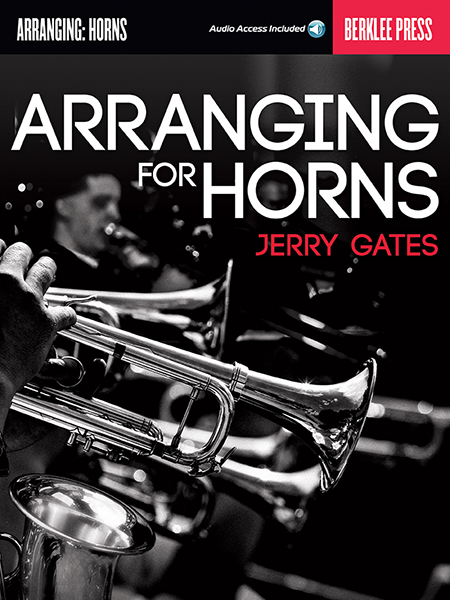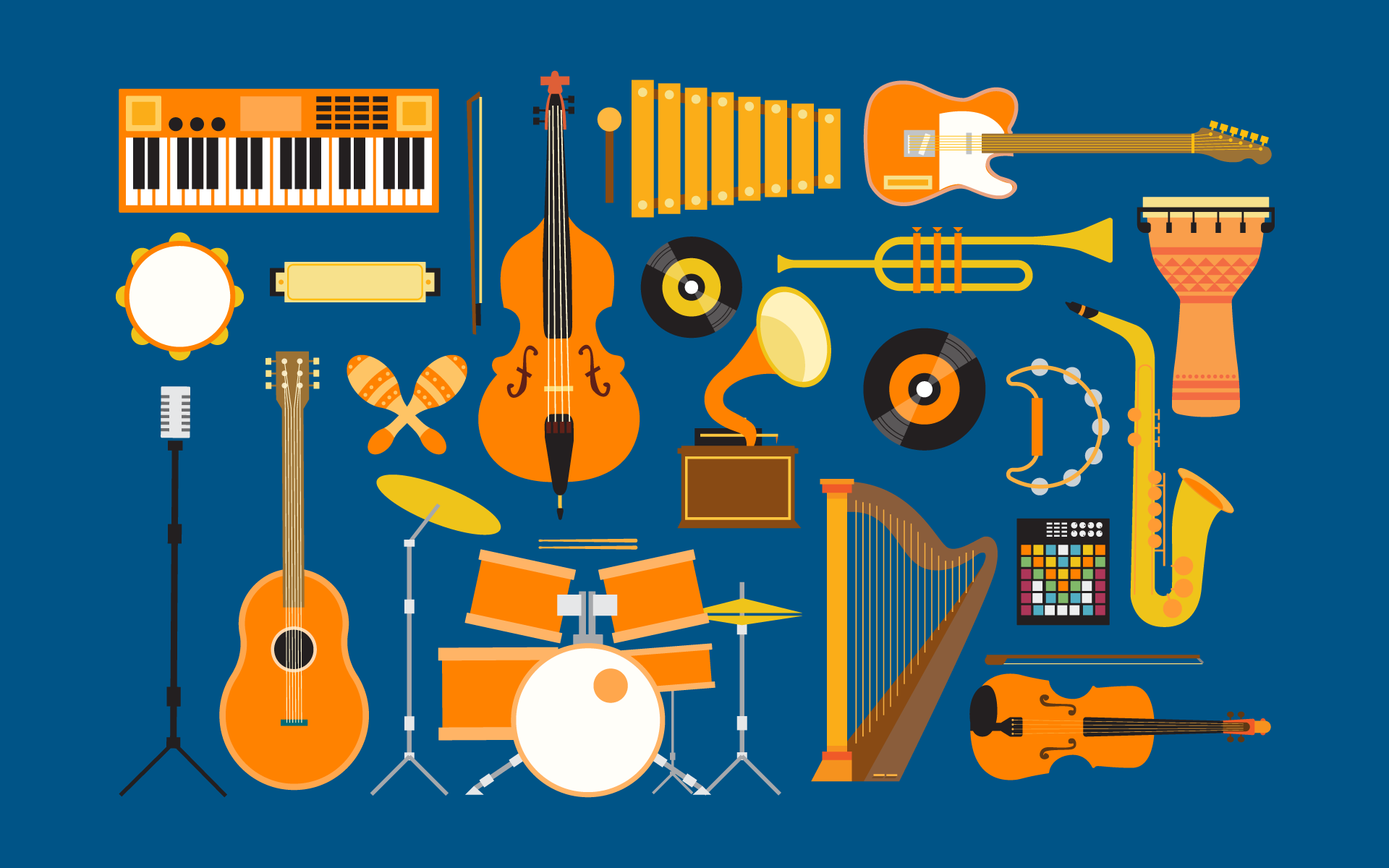Jerry Gates’s work as an arranger, orchestrator, composer, and producer has been featured worldwide, on the concert stage and for TV shows and commercials. He has taught at Berklee since 1993, and was one of the key contributors towards developing the arranging curriculum both at Berklee’s campus and online. His recent book Arranging for Horns was just released, and in this interview, he gives some additional insights about that process.
How does arranging for synth horns differ from using real instruments?
JERRY: Synth horns or samples tend to be a thicker or fatter sound than live players. There is a real immediacy as to how the sound gets to our ears from the speakers with synthesized sound. When creating mockups or demos that in the end become live players, this can be a real problem if you are not aware of it. When using a sample, you can be fooled into thinking one or two horns is full enough for the sound you are looking for. However, when you get to the session or rehearsal you quickly find out that the small number of horns you wrote for in your computer doesn’t sound as big and fat as it did coming out of the speakers!
What are the common mistakes that novice arrangers make, regarding horns?
One of the biggest mistakes beginning writers seem to make is in the understanding of the way the treble and bass clefs are separated. Only middle C separates the two. However, if needing to place the “A” pitch below middle C in the bass clef, the student often places it an octave lower to the first space of the bass clef. The thought being that the bass clef is further away than what it really is. So, a student will drop a note in the voicing one full octave when it shouldn’t have been. Another common mistake that is related happens when the writer puts too much space between notes anywhere in a voicing. Again, this often happens because it seems to sound okay in the notation software. In my case, I didn’t have a computer to write with, so I had to learn what particular voicings sounded like first on the piano and then with live players.
Do you commonly give your arranging students any standard bits of advice that tends to lead to exponential improvement? How do you turn on those “a-ha!” moments in arranging class?
WORK, WORK, WORK! What I’ve learned and try to pass along to my students is that the key to getting to those “aha!” moments is to simply do the hard work. That is, listen to music critically and study as many scores with audio as you can. The more you critically observe the writing of others (and your own), the more confident you will become in your own writing.
One of the major differences between you and ____________(fill in the blank of your favorite arranger or composer) is that person has already put in “10,000 hours” studying, observing, writing, listening, and practicing. There are no secrets about this. If you put in that kind of dedicated time to your craft, you will become very good at writing too.
Find out what makes a particular piece of music “tick.” How was it put together? Why was it put together? Is there a historical reason why a piece was written or arranged or composed? Today there are so many published scores in all styles that it is easier to learn how to create interesting sounds when studying the work of others.
When you have the freedom to use any instrumentation in your horn section, what considerations are there, to inform your choice?
If I want more of a “power” sound, then I will want more brass in the section than saxophones. Brass sections as a whole are very good at being powerful when you need them to. If I am going to write a lot of fast lines, I will want at least three saxophones, because they can play very fast. A group of three can sound full as they can also play triads.
Also, I try to work with players that can “double” on other instruments. For example: Alto saxophone can often also play flute, tenor sax can often play clarinet, and bari sax can often play bass clarinet. Trumpet players often double on flugelhorn. These extra instruments give me far more latitude when writing. This is especially critical when I have to turn a project around (get the finished music back to the client) really quickly, but the music hasn’t been written yet!
If your ensemble has a horn section, does it also need a conductor?
If there is a rhythm section present, there is no real need for a conductor other than to direct rubato sections or speed up a rehearsal or recording session. Someone in the band can count off the song and cut it off at the end. However, someone has to be the person to make the final decisions with respect to the directions on the score (style, phrasing, dynamics etc.).
How has arranging for horn sections evolved over the past hundred years or so? Have advances in technology or technique led to any changes?
To me there have been two major changes in the past hundred years for all instruments. One of these changes is related to the technical abilities of the individual player. Compositions that were once considered a major professional challenge are now being performed by college- and even high school–level students. In this way, if the composer or arranger deems it necessary, they can create extremely challenging music and know that it may be able to be performed.
The second big change is the advance of technology and how it can be applied to all instruments including horns. The extreme side of using technology today would include the use their instrument as a “controller,” much like a keyboardist does, allowing them to alter the sound to whatever degree they wish—even to the extent of not recognizing the sound of the original instrument.
LEARN ABOUT A CAREER AS A MUSIC ARRANGER
What recordings do you consider to be examples of horn arranging at their finest?
In terms of current writers, I’ve become a big fan of what Gordon Goodwin and his Big Phat Band have been doing over the past ten years. Goodwin’s writing is so clear. It is respectful to jazz, infuses classical ideas into the work and adds contemporary concepts. He does a lot of writing for school and college bands too, so his scores and recordings are readily available to dive into. He has a number of performance videos on the Internet and works on high-level films too. Snarky Puppy is doing some cool things mixing horns with current technology and grooves.
Another current band that has been doing great arrangements is Patax, based in Madrid. The leader of the band, Jorgé Perez, was at Berklee around ten years ago, I believe.
Here are some personal favorites.
STUDY ARRANGING AT BERKLEE ONLINE







